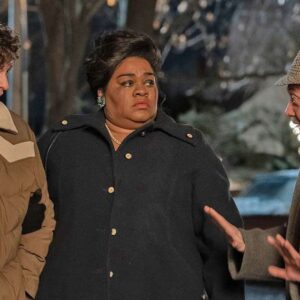Also known as an Action House Cinema, Grindhouse Cinema is an American phrase that relates to a specific type of film production, content, and exhibition method that became most popular throughout the 1970s. While there are some exceptions, most Grindhouse movies are typically low-budget, quickly-made B movies that belong to the horror, action, and exploitation genres and often rely on salacious material, graphic nudity, gratuitous gore, and more.
Beyond the exploitative content depicted on the big screen, Grindhouse movies were often shown in smaller, rundown movie theaters that would play double and triple bills at discounted ticket prices, which would increase as the day progressed. Therefore, the economic model of Grindhouse Cinema was much different than mainstream multiplexes, which benefited from fewer showings per day, gradual ticket hikes, and specific seat pricing. To learn more about the history, content, decline, and honorary examples, here's everything movie fans need to know about Grindhouse Cinema.
Grindhouse's History Dates Back to the 1920s

In his book Grindhouse Nostalgia (via academia.edu), film historian David Church chronicles the evolution of the cinematic genre. Church traces the term Grindhouse back to "Grind Policy," a term first coined in the 1920s that referred to a specific type of exhibition programming. The method included playing continuous movies at cut-rate ticket prices that would increase over the day. The idea was to keep the moviehouses crowded by offering 24-hour movie exhibitions, a wide variety of films, and low ticket prices. Oftentimes, the price of one cheap ticket would afford viewers the ability to see two or three movies in a row.
According to Church, the term "Grindhouse" was first used in a 1923 Variety publication and related to carnival barkers screaming, or grinding, in public for patrons to enter a venue. The term would evolve over the years to take on a more salacious and disreputable meaning related to sex, violence, bizarre behavior, socioeconomic status, and a rowdy and raucous environment of patrons hanging out watching forgotten '70s B-movies in Grindhouse theaters for hours on end.
Church also notes how these types of theaters were often located next to Burlesque houses and sordid sex shows in New York, and the term Grindhouse became associated with the "bump and grind" activity that took place in such places. While Grindhouse does not refer to Burlesque in modern-day parlance, the proximity of action houses and burlesque shows ultimately led to the phrase Grindhouse.
Cheap, Inferior Content Across the Board

Movies that were made for and screened in Grindhouse theaters fostered a specific production style and brand of content. Most Grindhouse movies were made quickly on a shoestring budget, with inferior craft and low production values across the board, allowing for a large output of films to be made on a quantity-over-quality production model. In addition to original films, Grindhouse theaters would also become known for occasionally showing second-run Hollywood studio films at discounted prices. These types of cinemas were often located in rundown neighborhoods in poor communities, which informed the economic blueprint. Beyond the exhibition practices, the content of Grindhouse films is what resonates the most.
Exploitation cinema may refer to low-budget, cheaply made horror B-movies, as well as Blaxploitation (Coffy, Foxy Brown), Sexploitation (Ilsa, She Wolf of the SS), Chopsocky martial arts movies (The Street Fighter), and other types of movies that rely on poorly made and badly performed action, graphic nudity, carnage, and the like. Another major aspect regarding the content of Grindhouse cinema relates to the deliberate mismarketing and promotional promises made by theaters. Oftentimes, the advertisements for Grindhouse movies were able to draw in crowds of patrons by promising one type of movie, only for the audience to witness a much different product. In many instances, the most titillating parts of any given movie were spoiled in the promotional material, leaving fans with a much different experience than they expected going in.
Home Video and Shuttered Theaters Led to the Grindhouse Downfall

In the present day, Grindhouse theaters are a thing of the past. The decline and downfall of Grindhouse Cinema can be directly attributed to the rise of home video and pay cable movie channels that became popular in the 1980s. As moviegoers began watching films in the confines of their homes, the demand for Grindhouse cinemas began to wane. Just as the rise of television threatened the future of cinema, home video, and premium cable threatened and all but succeeded in phasing out the desire for a Grindhouse exhibition.
By the mid-1990s, the most famous Grindhouse cinemas in New York, Los Angeles, San Francisco, and other cities were no longer in business. It was no longer an option to find refuge by dolling out a few dollars and spending a whole day inside a Grindhouse theater watching B-grade triple features. Thankfully, filmmaking fans of exploitation movies like Quentin Tarantino have helped to curate the Grindhouse filmgoing experience through his New Beverly revival house in Los Angeles, which currently plays second-run studio films.
Of course, Tarantino famously teamed with Robert Rodriguez in 2007 to deliver Grindhouse, a two-part horror movie (Planet Terror, Death Proof) homage that has kept the genre alive in some capacity. Rodriguez would go on to make two Sin City and Machete movies, which perfectly encapsulate the Grindhouse style.
Current Homages Keep the Grindhouse Spirit Alive
Although Grindhouse theaters may be a thing of the past, the content of the genre continues to live on in spirit. For instance, in 2023, Eli Roth released Thanksgiving, a movie that famously began as a faux trailer for Grindhouse, the overt homage delivered by Tarantino and Rodriguez. The movie received positive reviews for its ability to recreate the tone and tenor of the original trailer and perpetuate the stylings of a throwback Grindhouse film. Other recent examples include Ti West's X and follow-up Pearl, the first of which is set in the '70s. Both deliberately honor the classic Grindhouse aesthetics of The Texas Chainsaw Massacre.
Some other filmmakers who continue to channel the Grindhouse movie spirit include:
- Rob Zombie (House of 1,000 Corpses, The Devil's Rejects)
- S. Craig Zahler (Brawl in Cell Block 99, Dragged Across Concrete)
- Patrick Lussier (My Bloody Valentine, Drive Angry)
- Jason Eisner (Hobo with a Shotgun, Treevenge)
- Tom Six (The Human Centipede)
While not quite an exact 1:1 comparison, as genuine Grindhouse movies were made for much less money and with far fewer technical resources, the tone, tenor, and salacious content continue to proliferate in some capacity. Whether cheaply made and cheaply exhibited B-movies centered on sex, violence, exploitation, and bad behavior will have a place in the future, Grindhouse cinema has left its mark on American culture over the past century.






